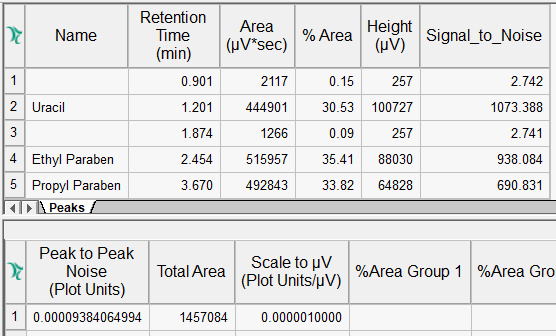Processing Methods - Calculate signal-to-noise ratio without the System Suitability option - wkb260927
OBJECTIVE or GOAL
Calculate signal-to-noise ratio without the System Suitability option in a non-regulated environment.
ENVIRONMENT
- Empower
- Empower Tip of the Week #326
PROCEDURE
STEP 1
Use the Noise and Drift tab in the Processing Method to have noise calculated. Using this tab, Empower can calculate Detector Noise, Detector Drift, and Peak-to-Peak Noise. As in previous tips, set the range over which Empower will calculate noise within the chromatogram of interest. The difference between Start Time and Stop Time must be greater than or equal to the specified segment width. The Segment Width is used to calculate average noise and drift values (Figure 1).

STEP 2
Create a peak Custom Field to calculate signal-to-noise. In its simplest form, it would be height/noise. We need to correct the unit difference between peak height (microvolts) versus peak-to-peak noise, which is in plot units, so we need to add the Scale to Microvolts field to the equation (Figure 2).

STEP 3
Signal-to-noise is calculated for our peaks, and the peak-to-peak noise is found in the Chromatogram Result table in the Results window within Review (Figure 3).

ADDITIONAL INFORMATION
This can be done with either the Pro or QuickStart interface.

